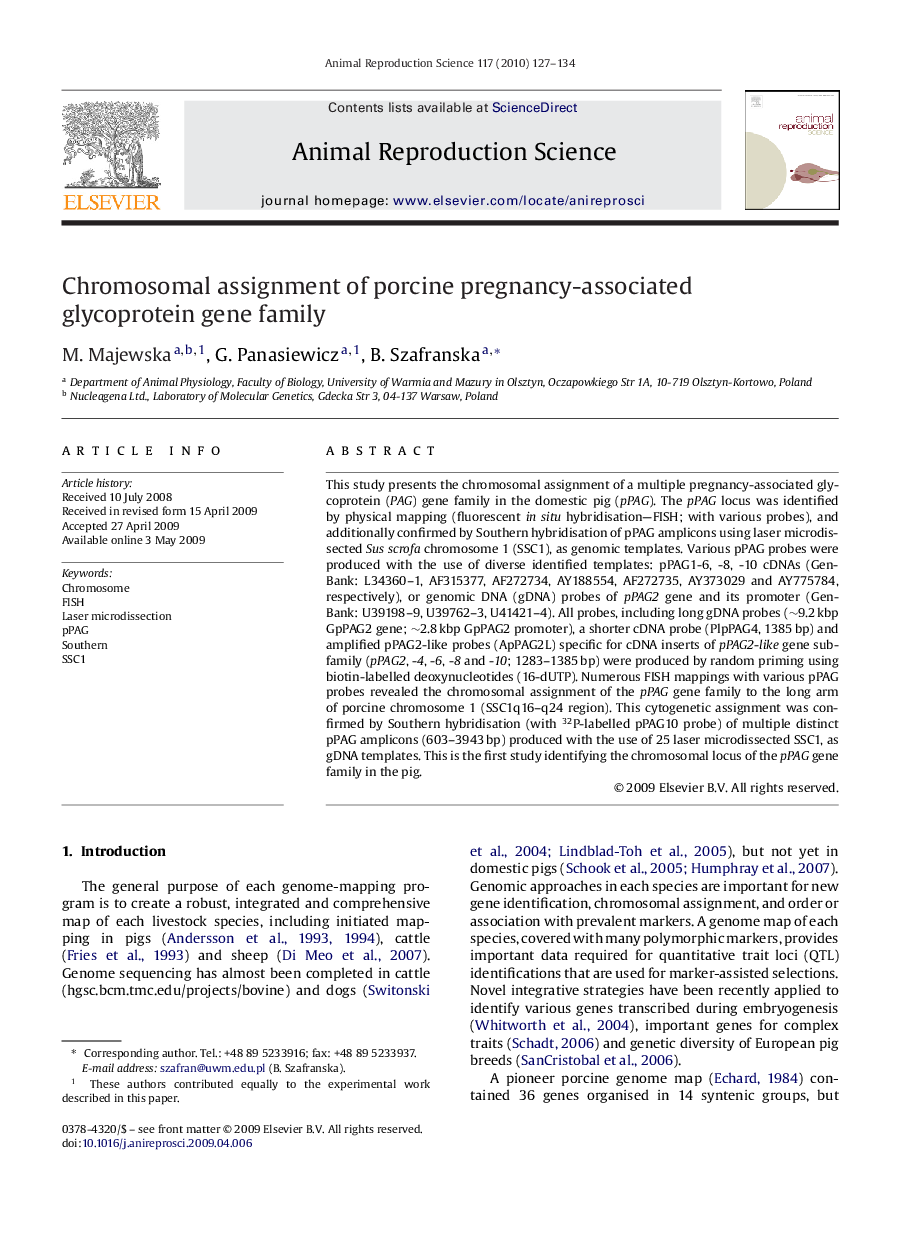| Article ID | Journal | Published Year | Pages | File Type |
|---|---|---|---|---|
| 2073986 | Animal Reproduction Science | 2010 | 8 Pages |
This study presents the chromosomal assignment of a multiple pregnancy-associated glycoprotein (PAG) gene family in the domestic pig (pPAG). The pPAG locus was identified by physical mapping (fluorescent in situ hybridisation—FISH; with various probes), and additionally confirmed by Southern hybridisation of pPAG amplicons using laser microdissected Sus scrofa chromosome 1 (SSC1), as genomic templates. Various pPAG probes were produced with the use of diverse identified templates: pPAG1-6, -8, -10 cDNAs (GenBank: L34360–1, AF315377, AF272734, AY188554, AF272735, AY373029 and AY775784, respectively), or genomic DNA (gDNA) probes of pPAG2 gene and its promoter (GenBank: U39198–9, U39762–3, U41421–4). All probes, including long gDNA probes (∼9.2 kbp GpPAG2 gene; ∼2.8 kbp GpPAG2 promoter), a shorter cDNA probe (PlpPAG4, 1385 bp) and amplified pPAG2-like probes (ApPAG2L) specific for cDNA inserts of pPAG2-like gene subfamily (pPAG2, -4, -6, -8 and -10; 1283–1385 bp) were produced by random priming using biotin-labelled deoxynucleotides (16-dUTP). Numerous FISH mappings with various pPAG probes revealed the chromosomal assignment of the pPAG gene family to the long arm of porcine chromosome 1 (SSC1q16–q24 region). This cytogenetic assignment was confirmed by Southern hybridisation (with 32P-labelled pPAG10 probe) of multiple distinct pPAG amplicons (603–3943 bp) produced with the use of 25 laser microdissected SSC1, as gDNA templates. This is the first study identifying the chromosomal locus of the pPAG gene family in the pig.
